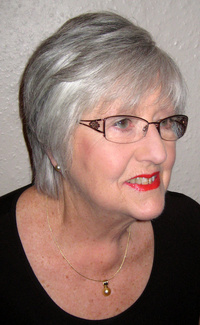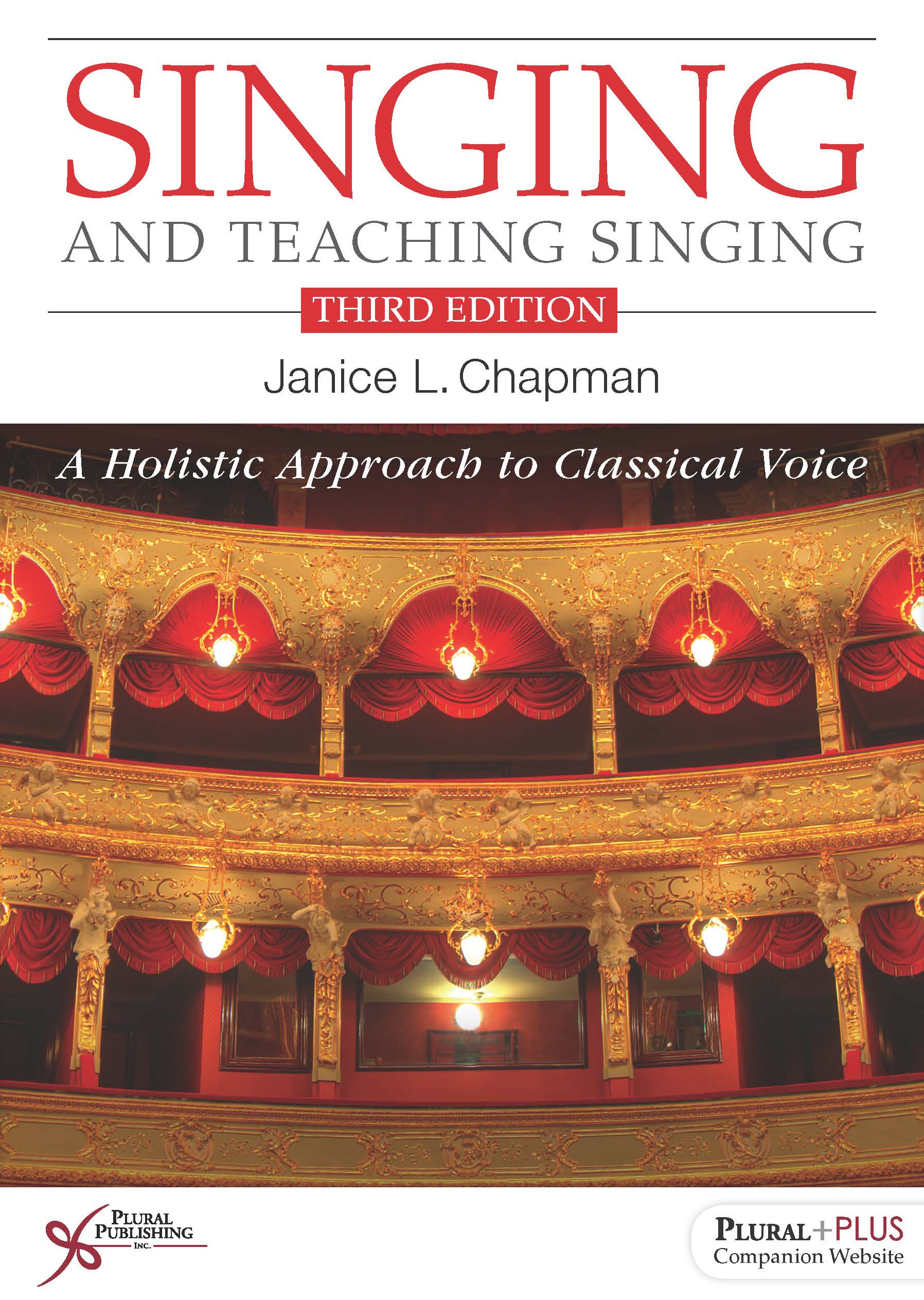
Singing and Teaching Singing: A Holistic Approach to Classical Voice.
Third Edition
Janice L. Chapman
Details: 400 pages, B&W, Softcover, 7" x 10"
ISBN13: 978-1-59756-891-3
© 2017 | Available
NOW WITH VIDEOS!
Singing and Teaching Singing: A Holistic Approach to Classical Voice, Third Editioncontinues to be a beloved resource for singers and their teachers, speech-language pathologists, and laryngologists and an adopted text for instructors and students in voice, singing, and performing arts courses. Janice L. Chapman is able to draw on her experiences as a singer with some of the world's leading opera companies to present a teaching technique specifically focusing on voice in the areas of classical and opera singing. Interspersed with the concepts and components of Chapman's methods are vignettes from her life and career, animated by her conversational and vibrant style to guide (and entertain) the reader through the book in a step-by-step fashion.
The philosophy of teaching presented combines three main facets: Holistic, Physiological, and Incremental. The Holistic segment emphasizes that the act of singing involves the whole person (i.e., body, mind, spirit, emotion, and voice); the Physiological segment stresses anatomy, muscular function, and effects of muscular interactions so that students and teachers alike can understand and visualize the functional workings of the torso, larynx, and the vocal tract and their impact on good singing practices; and the Incremental section shows that the act of singing can be broken down into manageable components that have a natural hierarchy that eventually interact and interlock. This teaching model provides a framework to master one element at a time, with the resulting effect of a complete and integrated mastery of technique. Chapman recommends this framework for rehabilitative work with the dysfunctional singer, for working with the developing singer, and for the ongoing development and maintenance of the technically able professional singer. Case studies, examples, exercises, and contributions from some of the world's best-known voice professionals further highlight the text.
New to the Third Edition
- The addition of a completely new chapter: an interview with voice specialist osteopath Jacob Lieberman on the subject of manual therapy and voice
- A rewriting of Marilyn McCarthy's chapters on teaching and learning in light of advances in the fields of neuroscience and education
- Updates to Pamela Davis's chapter on voice and the brain, as well as John Rubin's chapter on vocal and respiratory anatomy and physiology
- Clarifications by Ron Morris on the use of the accent method of breathing as a highly effective remedial and training technique
- Refinements to chapters on breathing and support, phonation, and resonance
- A PluralPlus companion website with supplemental videos that demonstrate some of the exercises from the teaching model
'Videos:
- Video 1. Janice Introduction
- Video 2. Primal Sound
- Video 3. Abdominal Support
- Video 4. Basic In-Breath
- Video 5. Dial-a-Vowel
View a sample video from the companion website here.
Reviews
"In 2007, late in the fall semester, I received a desk copy of Singing and Teaching Singing: A Holistic Approach to Classical Voice by Janice L. Chapman. At the time I was searching for a new text to use in my voice pedagogy practicum class, which is offered in the spring semester, so I put it in my carry-on bag and took it with me on my winter break travels. I began reading the book on the first leg of my flight and practically didn’t put it down until I finished it. Now it its third edition, Singing and Teaching Singing: A Holistic Approach to Classical Voice has had a constant, prominent place on my voice pedagogy practicum syllabus ever since. I can attest to the consistently enthusiastic response it has received from my students, who are drawn to Chapman’s personal and engaging style of writing, which gives useful insight into how she thinks as a teacher. It is an essential companion to texts that focus primarily on physiology and acoustics. Chapman’s writing is grounded in voice science, but I find particular value in the way she invites readers to adopt a consciously multidisciplinary approach to the teaching of singing. The book’s first chapter, “Pedagogical Philosophy,” had an enormous impact on my own teaching ten years ago in how it guided me to systematize the information I was trying to impart in the voice studio. In the chapter, Chapman describes her own philosophy of teaching—one that is holistic, physiological, and incremental—and how she arrived at it. For Chapman, holistic singing “involves the whole person (i.e., body, mind, spirit, emotion, and voice)” and “can be achieved when the performer is able to attain a state of urself-conscious focus.” Physiological teaching “is based on the laws of anatomy, muscular function, and the effects of muscular interactions.” She uses incremental “to mean that singing can be broken down into manageable components and that these components have a natural hierarchy of effect.” The chapter ends with a discussion of the various components of singing and how she organizes them into a teaching model. She designates primal sound, postural alignment, and breathing and support as “core components,” which “form the nucleus of the model.” Phonation and speaking voice, resonance, articulation, and artist and performance are “satellites” in Chapman’s model. She expounds upon these core components and satellites in subsequent chapters, four of which were written with Ron Morris.
...Singing and Teaching Singing: A Holistic Approach to Classical Voice has, for ten years, been an important book for me in the studio and in the classroom, and I recommend it to any voice teacher looking to expand his or her range of learning."
—Dean Southern, DMA, Cleveland Institute of Music, in VoicePrints (Volume 15, Number 3, January 2018)
Foreword to the First Edition
Robert T. Sataloff, MD, DMA
Preface to the Third Edition
Janice L. Chapman
Acknowledgments
Contributing Authors
Multimedia List
Introduction
Janice L. Chapman
Chapter 1. Pedagogical Philosophy
Janice L. Chapman
Chapter 2. Primal Sound
Janice L. Chapman
Chapter 3. Postural Alignment
Janice L. Chapman
Chapter 4. Breathing and Support
Janice L. Chapman and Ron Morris
Chapter 5. Phonation and the Speaking Voice
Janice L. Chapman and Ron Morris
Chapter 6. Resonance
Janice L. Chapman and Ron Morris
Chapter 7. Articulation
Ron Morris and Janice L. Chapman
Chapter 8. Artistry and Performance
Janice L. Chapman
Chapter 9. Voice and the Brain
Pamela Davis
Chapter 10. At the Heart of Teaching and Learning
Marilyn McCarthy
Chapter 11. Teachers as Learners
Marilyn McCarthy
Chapter 12. Vocal and Respiratory Anatomy and Physiology
John S. Rubin
Chapter 13. Hearing and Singing
Adrian Fourcin
Chapter 14. Working With the Professional Singer
Janice L. Chapman
Chapter 15. From Performer to Pedagogue: A Multidisciplinary Route
Janice L. Chapman
Chapter 16. Manual Therapy in the Management of Voice Disorders: In Conversation With Janice Chapman
Jacob Lieberman
Appendix 1. Exercises
Janice L. Chapman
Appendix 2. Priorities in Developing the Young Adult Classical Singer at Music College
Janice L. Chapman
Index
VIDEOS
Video 1. Janice Introduction
Video 2. Primal Sound
Video 3. Abdominal Support
Video 4. Basic In-Breath
Video 5. Dial-a-Vowel
Purchasers of this book receive complimentary access to supplementary videos hosted on a PluralPlus companion website.
Materials:
- Video companions
To access the videos, log in to the website using the URL and Access Code located inside the front cover of your copy of Singing and Teaching Singing, Third Edition.
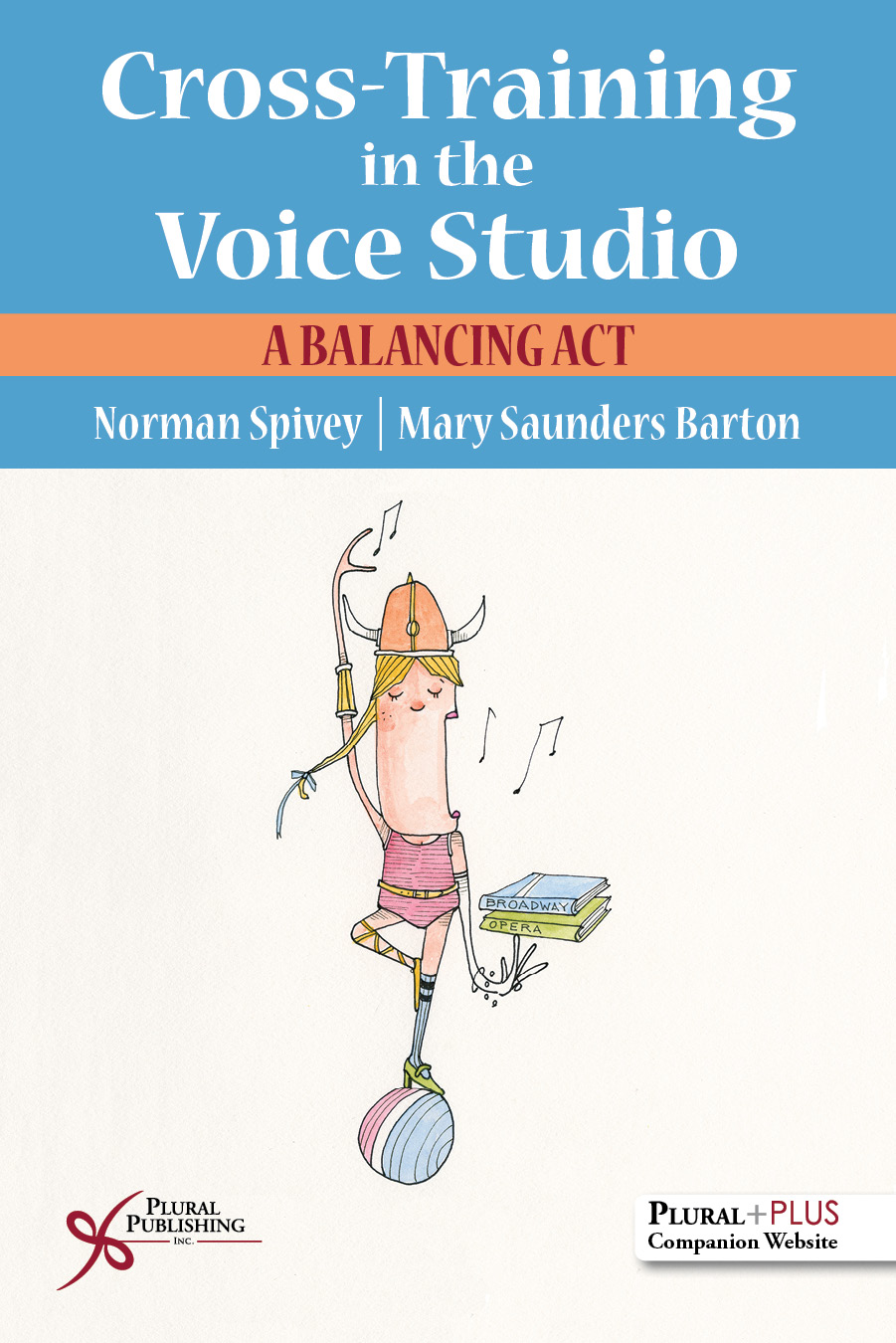
Cross-Training in the Voice Studio: A Balancing Act
First Edition
Norman Spivey, Mary Saunders Barton
Details: 151 pages, B&W, Softcover, 6" x 9"
ISBN13: 978-1-63550-037-0
© 2018 | Available
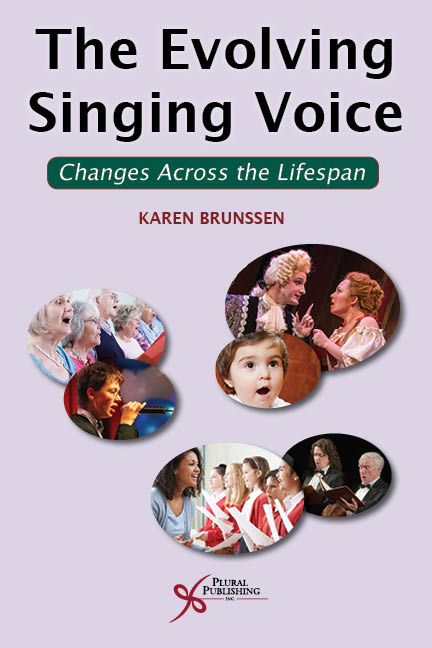
The Evolving Singing Voice: Changes Across the Lifespan
First Edition
Karen Brunssen
Details: 331 pages, B&W, Softcover, 6" x 9"
ISBN13: 978-1-63550-043-1
© 2018 | Available
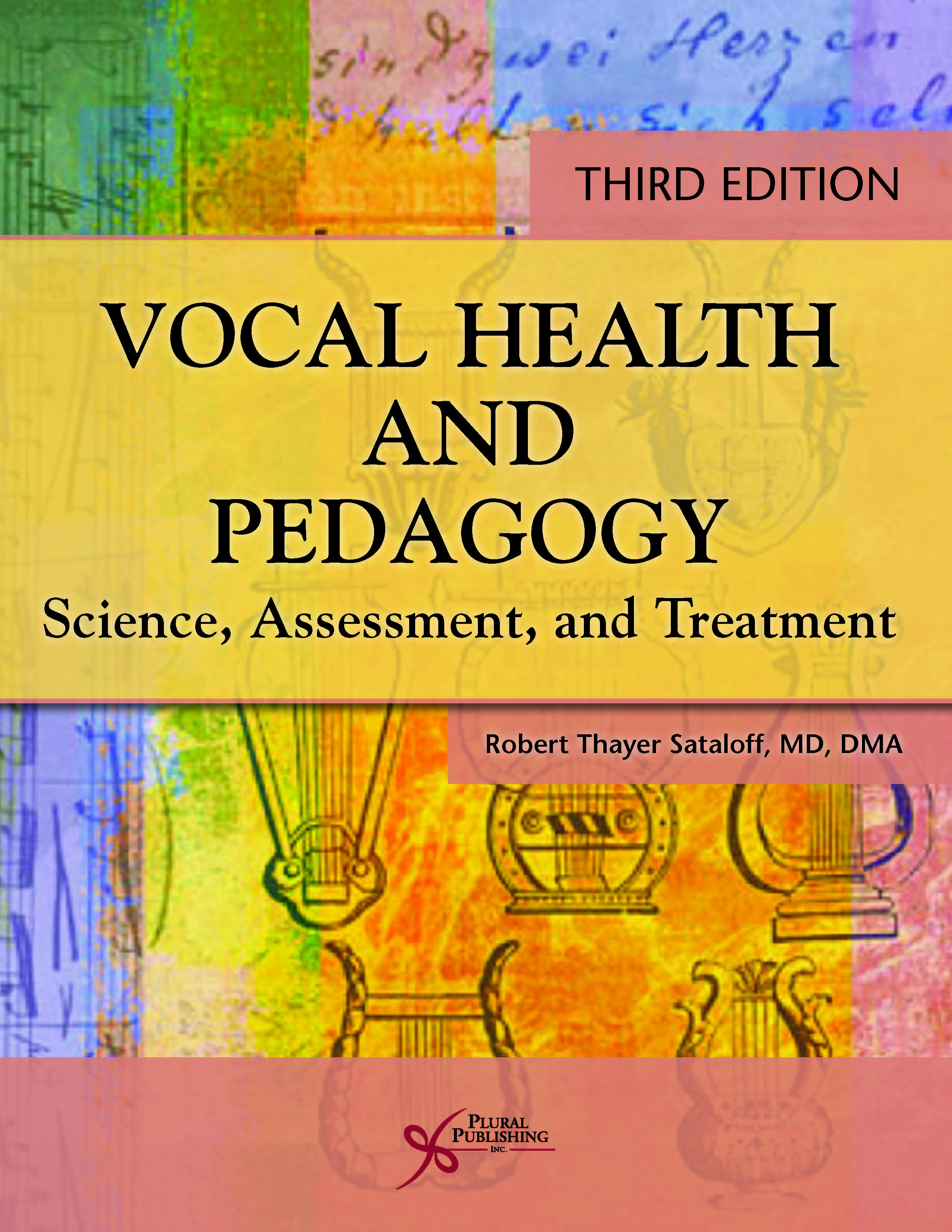
Vocal Health and Pedagogy: Science, Assessment, and Treatment
Third Edition
Robert T. Sataloff
Details: 984 pages, B&W, Softcover, 8.5" x 11"
ISBN13: 978-1-59756-860-9
© 2017 | Available
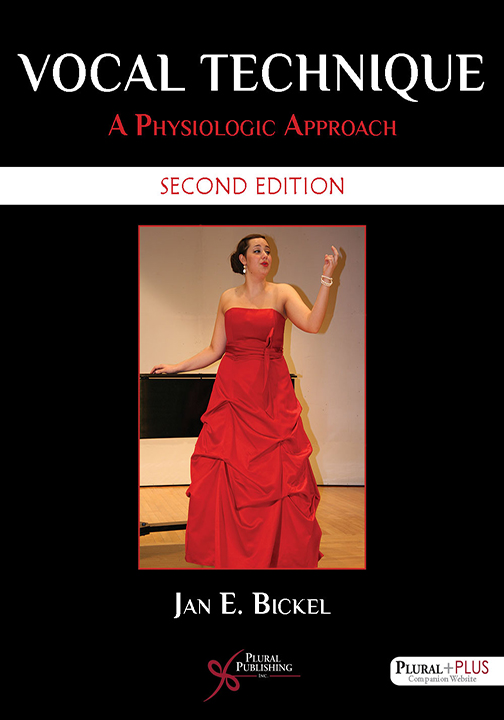
Vocal Technique: A Physiologic Approach
Second Edition
Jan Bickel
Details: 248 pages, B&W, Softcover, 8.5" x 11"
ISBN13: 978-1-94488-333-1
© 2017 | Available
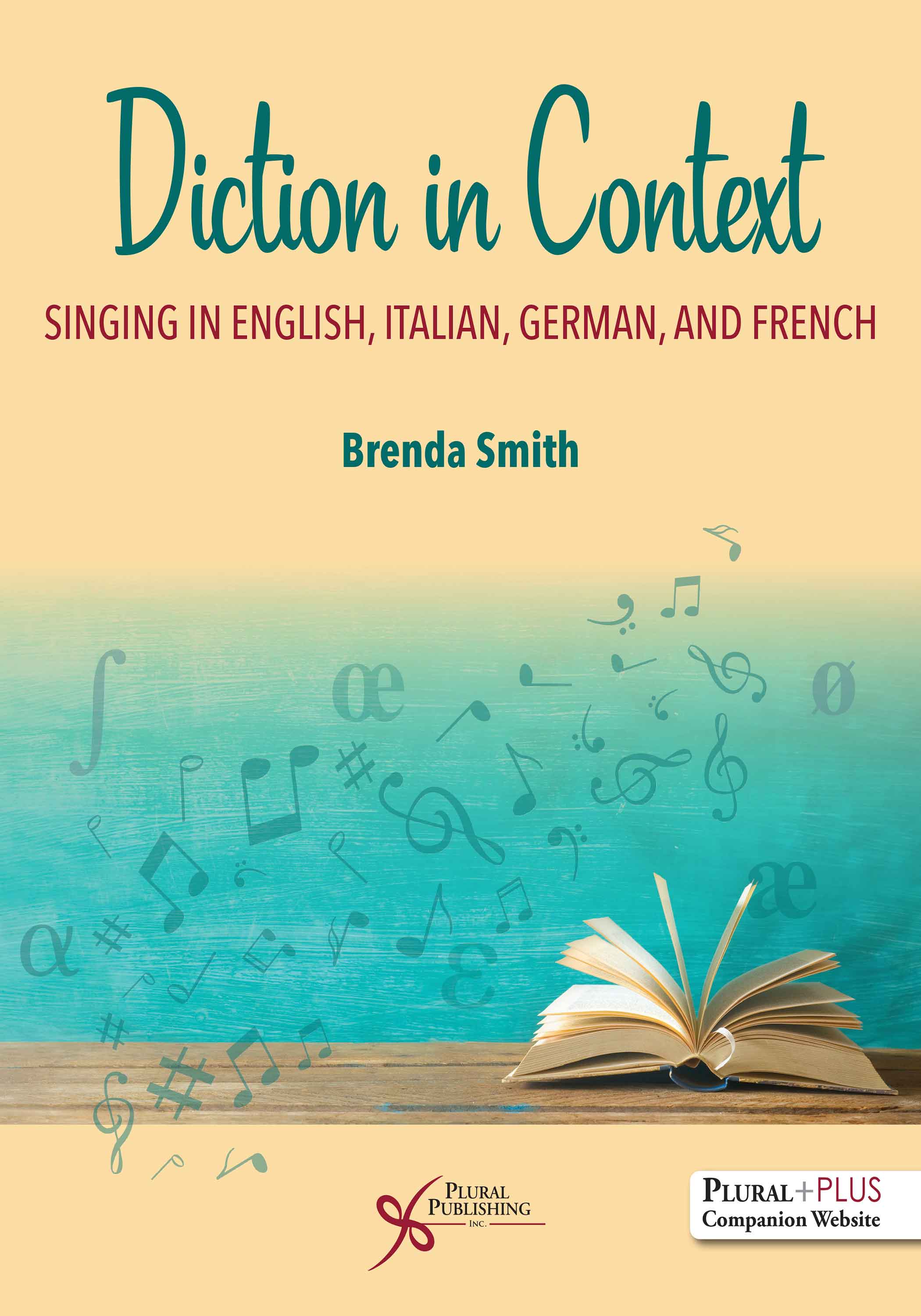
Diction in Context: Singing in English, Italian, German, and French
First Edition
Brenda Smith
Details: 345 pages, B&W, Softcover, 8.5" x 11"
ISBN13: 978-1-63550-120-9
© 2021 | Available

